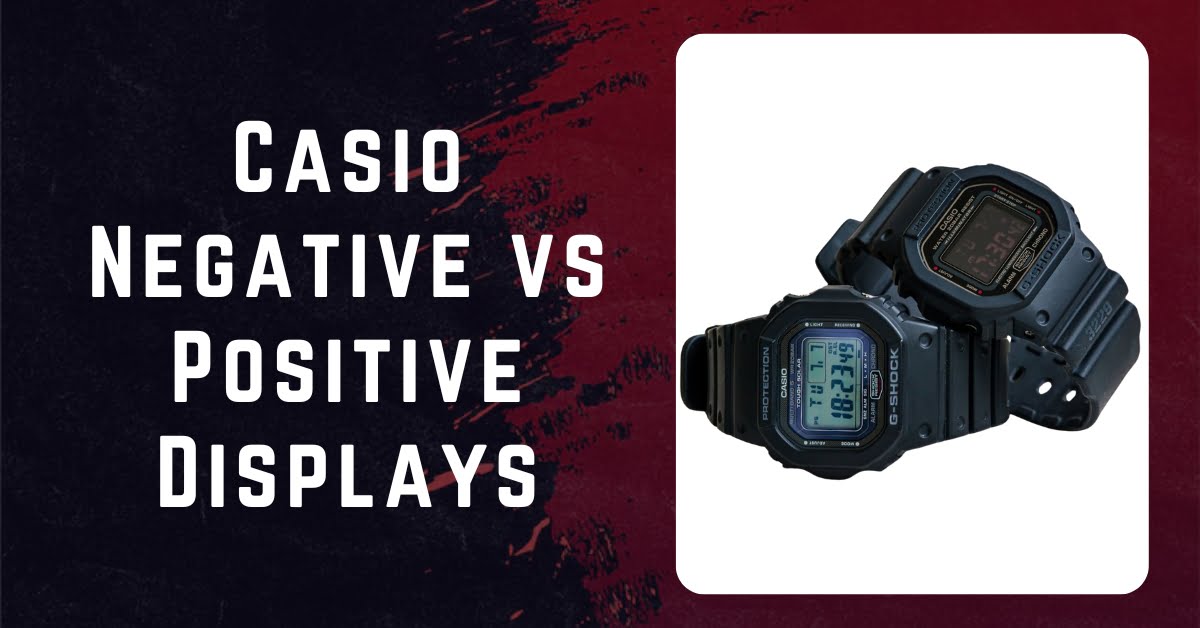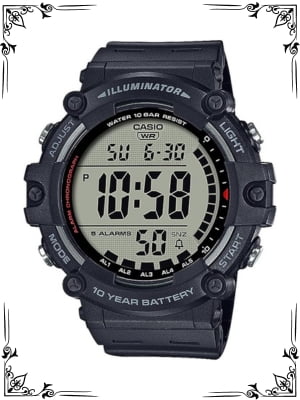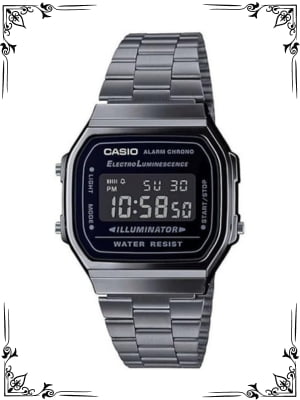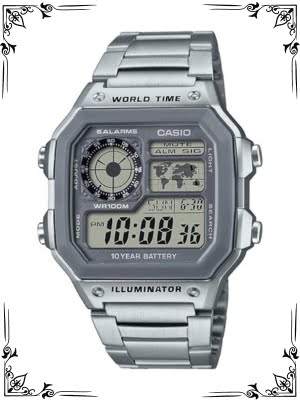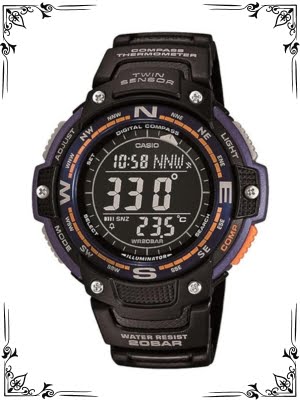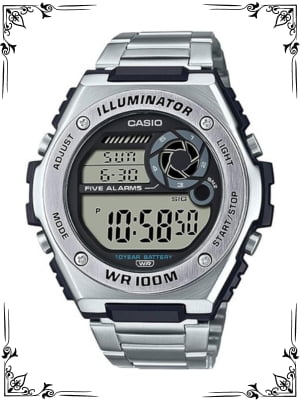Casio, a name synonymous with functionality and style, offers a diverse range of watches catering to various preferences. One key element that impacts a watch’s aesthetics and readability is the display type. Casio presents two primary display options: negative and positive.
But which one reigns supreme for your wrist? Worry not, watch enthusiast, because this comprehensive guide will illuminate the intricacies of both display types, empowering you to make an informed decision!
Demystifying Display Technology: A Glimpse into LCDs
Casio watches primarily utilize Liquid Crystal Displays (LCDs) for timekeeping and displaying information. These displays work by manipulating light to create visible digits and characters. Understanding the basic principles of LCD technology is crucial to grasping the difference between negative and positive displays.
Backlight: An LCD requires a backlight to illuminate the display, making the information visible. This backlight can be activated manually or automatically depending on the watch model.
Polarization Filters: LCDs utilize two polarization filters: a polarizer and an analyzer. These filters control how light passes through the display, influencing the final image you see.
Unveiling the Negative Display: A Dark Enigma
The negative display, also known as a reverse display, presents a unique aesthetic. Here’s a breakdown of its characteristics:
Functioning: In a negative display, the digits and characters appear dark or black against a light-colored background, typically light gray or light brown. The backlight illuminates the background, causing the dark digits to become visible.
Benefits: Negative displays offer a stealthy and stylish look, particularly popular with G-Shock and other sporty lines. They can also enhance readability in bright sunlight due to the high contrast between the dark digits and the light background.
Drawbacks: Negative displays might be less readable in low-light conditions without the backlight activated. The reliance on the backlight can potentially drain the battery faster compared to positive displays. Some users might find the information on the display slightly harder to read due to the lower overall contrast.
Table 1: Casio Negative Display – Key Characteristics
| Feature | Description |
|---|---|
| Appearance | Dark digits/characters on a light-colored background |
| Readability | High contrast in bright light, potentially lower contrast in low light |
| Benefits | Stylish look, potentially better readability in bright sunlight |
| Drawbacks | Less readable in low light without backlight, potentially higher battery drain |
Illuminating the Positive Display: A Classic Choice
The positive display, the more traditional option, offers a familiar and clear viewing experience. Let’s delve into its details:
Functioning: In a positive display, the digits and characters appear dark or black against a dark-colored background, typically black or dark gray. The backlight illuminates the digits and characters directly, making them visible.
Benefits: Positive displays offer excellent readability in both bright and low-light conditions, with or without the backlight activated. This makes them a versatile choice for various environments. They might also consume less battery power compared to negative displays since the backlight only needs to illuminate the digits themselves.
Drawbacks: Positive displays might not be as visually striking as negative displays for some users, especially those who prefer a more unique aesthetic. The contrast between the dark digits and the dark background might be slightly lower compared to a negative display in bright sunlight.
Table 2: Casio Positive Display – Key Characteristics
| Feature | Description |
|---|---|
| Appearance | Dark digits/characters on a dark-colored background |
| Readability | Excellent readability in both bright and low-light conditions |
| Benefits | Versatile, clear viewing experience, potentially lower battery drain |
| Drawbacks | Less visually striking for some users, potentially lower contrast in bright sunlight |
Beyond the Basics: Factors to Consider When Choosing a Display
While negative and positive displays offer distinct aesthetics and readability profiles, other factors can influence your decision:
Watch Model: Some Casio lines, like G-Shock, heavily feature negative displays due to their association with a sporty and rugged look. Classic and dress watches from Casio typically utilize positive displays for a more traditional aesthetic.
Personal Preference: Ultimately, the choice boils down to your personal style and viewing habits. Do you prioritize a unique look or clear readability in all conditions? Consider how you’ll be using your watch to make an informed decision.
User Feedback: The Voice of Experience
Understanding user experiences can offer valuable insights before making your choice.
Here’s a breakdown of common user feedback regarding Casio’s negative and positive displays:
Negative Display:
Strengths: Users appreciate the unique and stylish look, especially for sporty watches. The high contrast in bright sunlight is a plus for outdoor activities.
Weaknesses: Some users find it difficult to read in low-light conditions without the backlight. The reliance on the backlight can be a concern for battery life.
Positive Display:
Strengths: Users praise the clear readability in all lighting conditions, making them versatile for various environments. The potentially lower battery drain is another benefit.
Weaknesses: Some users find the positive display less visually interesting compared to the negative display. The contrast might be slightly lower in bright sunlight for some users.
Conclusion: Striking the Perfect Balance – Your Display Destiny Awaits!
The choice between a negative and positive display on your Casio watch boils down to a personal preference. Here’s a quick guide to help you navigate this decision:
Choose a Negative Display if:
- You prioritize a unique and stylish look, especially for a sporty watch.
- You primarily use your watch outdoors and value high contrast in bright sunlight.
- You’re comfortable using the backlight in low-light conditions.
Choose a Positive Display if:
- You value clear readability in all lighting conditions, with or without the backlight.
- You prioritize battery life and are concerned about potential backlight drain on a negative display.
- You prefer a traditional and versatile aesthetic for your watch.
Remember, both negative and positive displays offer functionality and style within the Casio universe. Ultimately, the ideal choice rests on your individual needs and preferences.
Consider the factors discussed in this guide, explore user experiences, and do your Casio watch with confidence, knowing you’ve selected the display that perfectly complements your style and lifestyle!
Frequently Asked Questions
1. Will a negative display always be harder to read than a positive display?
Not necessarily. Negative displays offer excellent readability in bright sunlight due to the high contrast. However, they might be less readable in low light without the backlight activated.
2. Do negative displays drain the battery faster than positive displays?
There’s a possibility. Since negative displays rely on illuminating the background to make the digits visible, they might consume more battery power compared to positive displays, where only the digits themselves need backlight illumination.
3. Are there any technological advancements that might improve negative display readability?
Casio is constantly innovating, and some newer negative display models boast improved technology that enhances readability in low-light conditions. These advancements might minimize the potential drawbacks of negative displays in the future.
4. I wear a lot of dark clothing. Will a negative display be a good choice?
The dark background of a negative display might blend in with dark clothing, potentially impacting readability. A positive display with its dark digits on a dark background might offer better contrast in such situations.
5. Can I modify my Casio watch to change the display type?
Unfortunately, no. The display type is an inherent feature of the watch model. However, Casio offers a wide range of models with both negative and positive displays, allowing you to find the perfect match for your needs and preferences.

